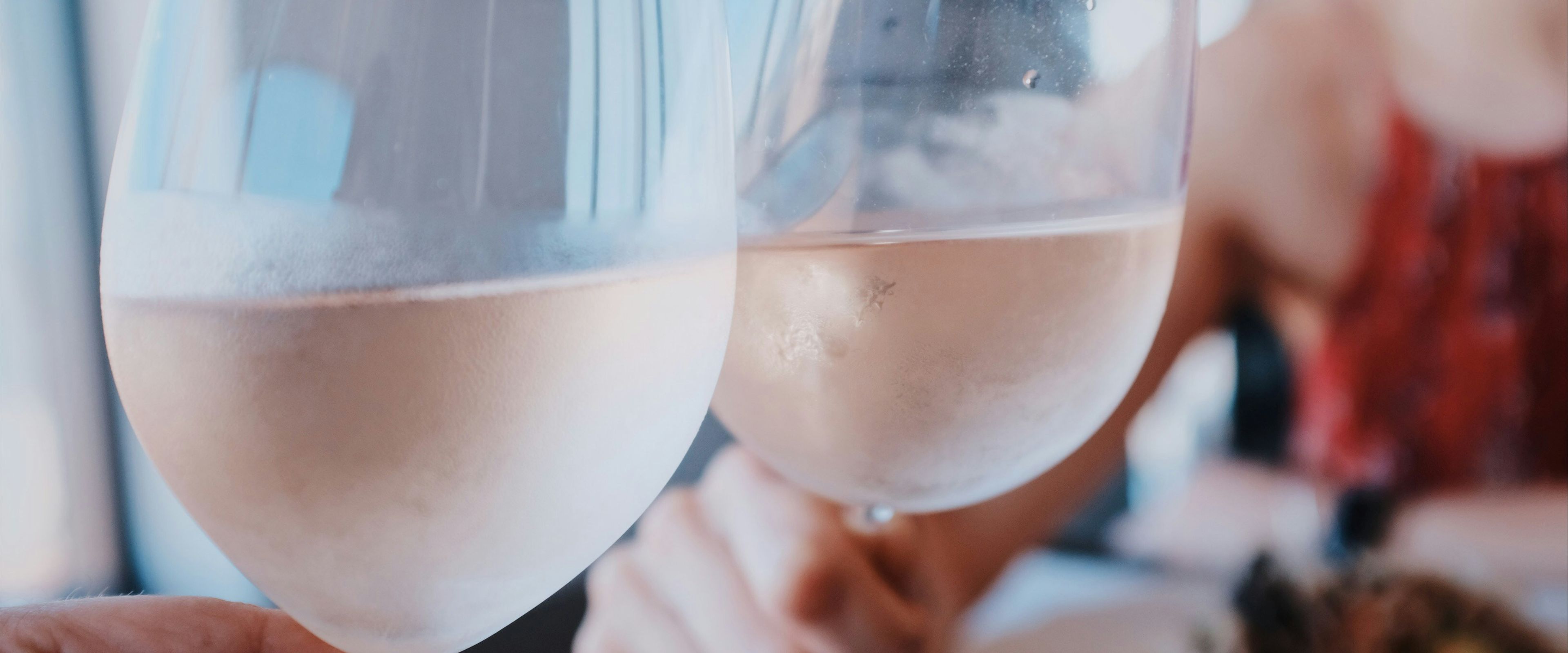
Crazy about wine
Early access to rosé season
The perfect summer drink
Summer is fast approaching, and in connection with that we take a look at the ultimate summer drink, namely rosé. After all, there’s hardly anything more appealing and tempting on a hot summer day than a fresh, cool and refreshing glass of rosé in the afternoon or evening sun. That said, rosé naturally comes in different variations, and that’s what we’ll take a look at. However, in practical terms, it can be beneficial to first dive into what rosé actually is, because despite what Rytteriet otherwise says of truth, it’s not just red wine and white wine mixed together!

Does rosé most resemble red wine or white wine?
Where confusion may arise is whether rosé is most similar to red wine or white wine. In terms of taste and storage, it can be said that it is most similar to white wine, as rosé should be drunk cold, but purely technically, rosé is always made from blue grapes, i.e. the grapes you also use to make red wine. The grapes are pressed and the grape skins are quickly removed from the must before maceration, so that the wine only gets minimal colour from the skins. When making red wine, the grape skin is left to stand longer, which gives it a redder and darker colour. For red wines, the peel can also remain in place for a shorter or longer period of time, which is one of the factors that determines the final colour of the red wine.
Another good rule of thumb when it comes to rosé is that it’s actually the opposite of orange wine. When making orange wine, green grapes (i.e. white wine grapes) are used, which are allowed to stand longer with the must during maceration, resulting in white wines with a darker colour = orange wine.
Since rosé is made from red wine grapes, rosé can theoretically be found in all red wine-producing countries, and it actually is, even though some countries, especially France, but also Italy and Spain, are more known for it than, for example, the USA, Australia or South Africa.

Rosé has a country/regional character
Like red and white wines, rosé naturally bears the mark of the country/region/terroir they come from and naturally also varies in taste depending on the type of grape. In other words, a rosé made from pure Pinot noir will taste significantly different from a rosé made from Tempranillo or Zinfandel. In theory, all types of grapes are used for rosé, but there are definitely grapes that are more widespread in the rosé world. Among the most popular are Grenache/Garnacha, Pinot noir, Sangiovese, Mouvédre/Monastrell, Tempranillo, Shiraz/Syrah, Montepulciano, Zweigelt and Cinsault, but if you encounter a bottle of rosé made from another grape, it should not be seen as a warning light. And just like red and white wine, rosé naturally also consists of mixtures of two or more different grapes.

Dark or light rosé wine?
Something that often catches the eye and conversation when it comes to rosé is the colour. Many swear by the pale pink salmon-coloured style, where a darker and redder colour can be scary because it can evoke the feeling of a sugary city. It’s also true that the lighter rosés are usually the freshest and most refreshing, but a dark rosé doesn't necessarily have to be sweet by definition. The dark colour can also be an expression of a strong, deep and complex rosé that needs a bit of food alongside, and that’s definitely not bad.

Combine your rosé wine with the food
When it comes to combining rosé with food, there are actually more options than you might think. Because rosé is rich in acidity and fruit, it is an excellent complement to strongly spiced dishes or lots of garlic. For example, a strong wok dish or the classic French fish soup bouillabaisse. The more elegant rosés are also great for sushi, tapas consisting of salt and strong ham/sausage as well as grilled fish that is not too fatty. If you have one of the sweeter rosés, just find the fresh Danish strawberries, but don't worry about whipped cream (38%)!
But let’s say it once and for all: rosé always tastes good on its own when the sun is shining.